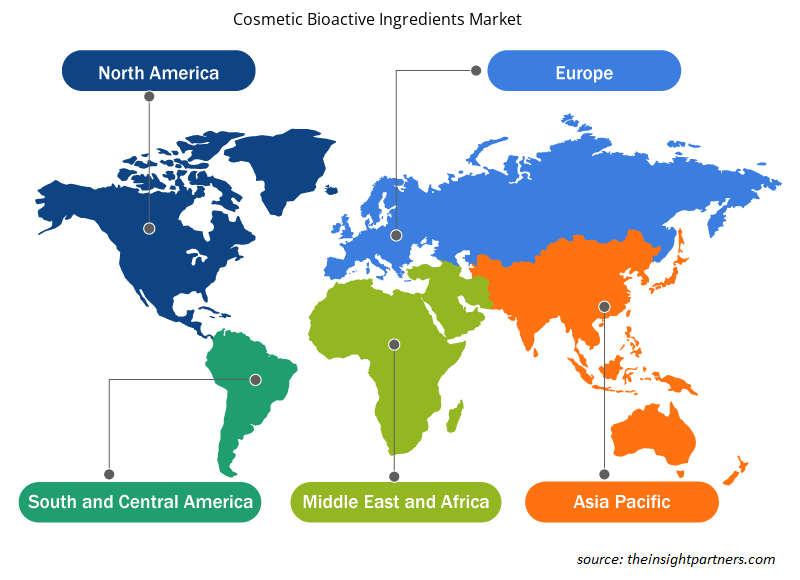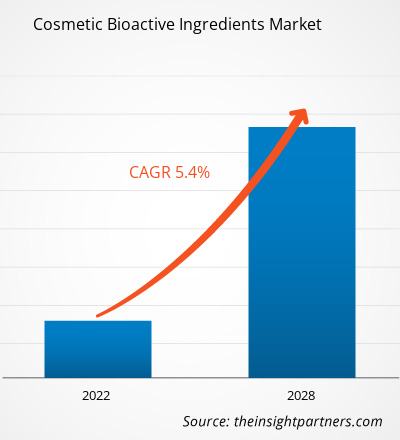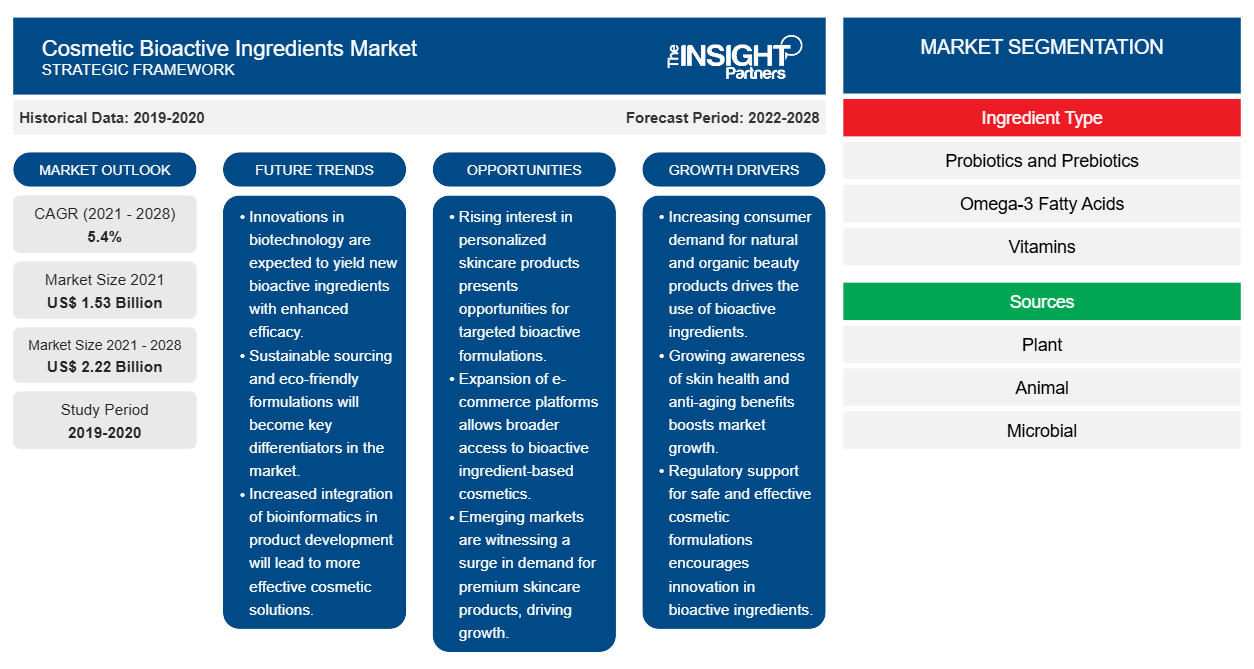化粧品用生物活性成分市場は、2021年の15億2,991万米ドルから2028年には22億1,596万米ドルに達すると予測されており、2021年から2028年にかけて5.4%のCAGRで成長すると推定されています。
化粧品は、肌や髪に塗布して洗浄、美化、魅力の促進、または外観の改善を行う製品です。このタイプの製剤に通常使用される有効成分の中には、商業的魅力、安全性、および相乗効果や多機能効果に関連することが多い豊富な組成のために、植物由来の製品を取り入れるという世界的な傾向があります。植物抽出物には、構造多様性の高い植物に存在する二次代謝産物が多く含まれています。フラボノイドと非フラボノイドの両方が、光保護、抗老化、保湿、抗酸化、収斂、抗刺激、抗菌活性などの興味深い化粧品特性に関連しています。これらの生物活性成分は、その生物活性成分と薬理作用により、皮膚科的利点を提供することが示されており、肌の若返り、光保護、創傷治癒などの潜在的な用途があります。化粧品生物活性成分市場の成長は、化粧品における天然成分の好みの高まりと、発売される生物活性成分の数の増加に主に起因しています。しかし、厳格な規制枠組みにより、化粧品用生物活性成分市場の成長は制限されています。
要件に合わせてレポートをカスタマイズする
このレポートの一部、国レベルの分析、Excelデータパックなど、あらゆるレポートを無料でカスタマイズできます。また、スタートアップや大学向けのお得なオファーや割引もご利用いただけます。
-
このレポートの主要な市場動向を入手してください。この無料サンプルには、市場動向から見積もりや予測に至るまでのデータ分析が含まれます。
市場分析
天然製品に対する消費者の需要の高まりにより、化粧品に使用できる生理活性物質に関する研究が活発化しています。ヨーロッパには、BASFやDSMなど、最大手の生理活性成分メーカーやパーソナルケアブランドがいくつかあります。パーソナルケア業界向けの生理活性成分の発売が、市場の成長を牽引しています。2019年6月、BASF Care Creationsは、肌に潤いを与えて若返らせるランブータンの木を使用した、美容市場向けの3つの新しい有効成分を発売しました。同様に、2019年4月、Lonzaは、天然由来の成分(アファノテセサクラム多糖類とガラクトアラビナン)と水およびグリセリンのユニークな組み合わせであるH2OBioEV生理活性成分を発売しました。この成分は、必須の保湿剤を補充することで保湿能力を付与し、強力な表皮タンパク質バリアの形成と維持に最適な環境を促進します。
原料タイプに基づく洞察
成分の種類に基づいて、化粧品の生物活性成分市場は、プロバイオティクスとプレバイオティクス、オメガ3脂肪酸、ビタミン、カロテノイドと抗酸化物質、植物抽出物、ミネラル、アミノ酸、タンパク質とペプチドなどに分かれています。アミノ酸セグメントは、2021年に市場で最大のシェアを占める可能性があります。ただし、植物抽出物セグメントは、予測期間中に市場で最も高いCAGRを記録すると予想されます。
ソースベースの洞察
化粧品の生物活性成分市場は、その供給源によって、植物、動物、微生物に分類されます。植物セグメントは、2021 年に市場で最大のシェアを占める可能性があります。ただし、予測期間中、微生物セグメントは市場で最も高い CAGR を記録すると予想されます。
化粧品用生物活性成分市場で事業を展開する企業は、製品の発売、合併や買収、コラボレーション、製品の革新、製品ポートフォリオなどの戦略を採用して、世界中で事業展開を拡大し、ブランド名を維持し、エンドユーザーからの高まる需要に応えています。
化粧品用生理活性成分市場の地域別分析
予測期間を通じて化粧品用生物活性成分市場に影響を与える地域的な傾向と要因は、Insight Partners のアナリストによって徹底的に説明されています。このセクションでは、北米、ヨーロッパ、アジア太平洋、中東、アフリカ、南米、中米にわたる化粧品用生物活性成分市場のセグメントと地理についても説明します。

- 化粧品用生物活性成分市場の地域別データを入手
化粧品用生理活性成分市場レポートの範囲
| レポート属性 | 詳細 |
|---|---|
| 2021年の市場規模 | 15億3千万米ドル |
| 2028年までの市場規模 | 22億2千万米ドル |
| 世界のCAGR(2021年~2028年) | 5.4% |
| 履歴データ | 2019-2020 |
| 予測期間 | 2022-2028 |
| 対象セグメント |
成分別
|
| 対象地域と国 |
北米
|
| 市場リーダーと主要企業プロフィール |
|
化粧品用生体活性成分市場のプレーヤー密度:ビジネスダイナミクスへの影響を理解する
化粧品用生物活性成分市場は、消費者の嗜好の変化、技術の進歩、製品の利点に対する認識の高まりなどの要因により、エンドユーザーの需要が高まり、急速に成長しています。需要が高まるにつれて、企業は提供品を拡大し、消費者のニーズを満たすために革新し、新たなトレンドを活用し、市場の成長をさらに促進しています。
市場プレーヤー密度とは、特定の市場または業界内で活動している企業または会社の分布を指します。これは、特定の市場スペースに、その規模または総市場価値と比較して、どれだけの競合相手 (市場プレーヤー) が存在するかを示します。
化粧品用生物活性成分市場で事業を展開している主要企業は次のとおりです。
- コーニンクレッカ DSM NV
- 味の素株式会社
- ロケット・フレール
- アドミン
- BASF SE
免責事項:上記の企業は、特定の順序でランク付けされていません。

- 化粧品用生体活性成分市場のトップキープレーヤーの概要を入手
化粧品用生理活性成分市場 –原材料の種類
- プロバイオティクスとプレバイオティクス
- オメガ3脂肪酸
- ビタミン
- カロテノイドと抗酸化物質
- 植物エキス
- 鉱物
- アミノ酸
- タンパク質とペプチド
- その他
化粧品用生理活性成分市場 – 供給元別
- 植物
- 動物
- 微生物
化粧品用生理活性成分市場 – 地域別
-
北米
- 私たち
- カナダ
- メキシコ
-
ヨーロッパ
- フランス
- ドイツ
- イタリア
- 英国
- スペイン
- その他のヨーロッパ
-
アジア太平洋(APAC)
- 中国
- インド
- 韓国
- 日本
- オーストラリア
- その他のアジア太平洋地域
-
中東・アフリカ(MEA)
- 南アフリカ
- サウジアラビア
- アラブ首長国連邦
- その他の中東およびアフリカ
-
南アメリカ(SAM)
- ブラジル
- アルゼンチン
- 南米および中米のその他の地域
企業プロフィール
- コーニンクレッカ DSM NV
- 味の素株式会社
- ロケット・フレール
- アドミン
- BASF SE
- FMCコーポレーション
- ヴィトラスバイオテック
- カーギル株式会社
- センシエント テクノロジーズ株式会社
- デュポン
- 過去2年間の分析、基準年、CAGRによる予測(7年間)
- PEST分析とSWOT分析
- 市場規模価値/数量 - 世界、地域、国
- 業界と競争環境
- Excel データセット
最新レポート
関連レポート
お客様の声
購入理由
- 情報に基づいた意思決定
- 市場動向の理解
- 競合分析
- 顧客インサイト
- 市場予測
- リスク軽減
- 戦略計画
- 投資の正当性
- 新興市場の特定
- マーケティング戦略の強化
- 業務効率の向上
- 規制動向への対応























 無料サンプルを入手 - 化粧品用生理活性成分市場
無料サンプルを入手 - 化粧品用生理活性成分市場